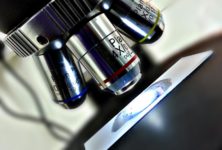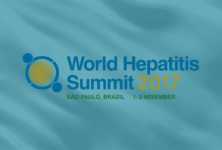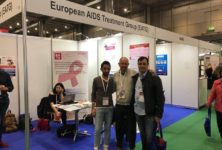During the early (also known as acute) stage of HIV infection—about two weeks after initial exposure—the amount of virus produced in the body is very high. This occurs because the virus has overwhelmed and subverted the body’s defences. As acute infection is not associated with symptoms unique to HIV, the vast majority of people will not know that they have been infected. Research suggests that a large proportion of new cases of HIV are inadvertently spread from people who are in the acute stage of HIV infection.
To significantly reduce the spread of HIV, more and perhaps frequent opportunities need to be made for confidential HIV testing and prevention counselling. In cases of a positive test result, swift referral to care should occur followed by the offer of HIV treatment (ART). When ART is initiated and taken every day exactly as prescribed and directed, this begins the process of reducing the amount of HIV in the blood (the viral load) to a level so low that it cannot be accurately counted by standard tests. This level is commonly called undetectable. Studies have found that early initiation of ART helps to preserve the immune system and significantly reduce the risk of developing serious infections and other complications. Furthermore, research has found that once viral load has reached this level and stays there because of continued use of ART an HIV-positive person’s risk of spreading HIV is negligible.
A team of researchers in London, England, has reviewed the medical records of 113 men whose acute HIV infection was diagnosed at a sexual health clinic. The team found that most of the men (77%) initiated ART at their first clinic visit. Furthermore, they found that 99% of participants had an undetectable viral load within six months of initiating ART. Participants whose ART consisted of a regimen that included a class of anti-HIV medicines called integrase inhibitors tended to achieve an undetectable viral load faster (41 days) than participants who used regimens without such drugs (nearly 90 days). Participants tolerated ART and there were no side effects that were sufficiently bothersome that they stopped treatment.
This report from England was a review of medical records rather than a study designed specifically to test different regimens for the early initiation of ART. However, it is important and adds to the growing body of evidence that shows that early initiation of ART is effective and acceptable by people living with HIV.
Given the tremendous power of ART to not only improve health but to stop the spread of HIV, it is likely that cities, regions and whole countries will strive to increase opportunities for the offer of confidential HIV testing and counselling followed by the swift referral to care where an offer of initiating ART can be made.
After testing
According to the study researchers, on the day that HIV was diagnosed at the sexual health clinic, participants were “assessed by a health advisor” and had their blood drawn for analysis—CD4+ count, viral load, kidney and liver health assessments, exposure to hepatitis-causing viruses, HIV drug resistance, and hypersensitivity to the anti-HIV drug abacavir (Ziagen and in Kivexa, Trizivir and Triumeq). The clinic then made an appointment for participants to receive care at a local hospital. According to the researchers, this appointment was scheduled “usually within two weeks of an [HIV] diagnosis.”
At the medical appointment, a doctor educated participants about the benefits of immediate initiation of ART. There were several regimens from which doctors and patients could choose. In cases where the person was infected with a strain of HIV that was not resistant to commonly used treatments, doctors offered a regimen consisting of a class of drugs called integrase inhibitors and two nucleoside analogues. In cases where participants had HIV with some degree of resistance to commonly used drugs, regimens based on a class of drugs called protease inhibitors were offered.
Focus on the participants
Eighty-seven participants (77%) agreed to initiate ART immediately at their first clinic visit. The average profile of participants upon starting ART was as follows:
- all were gay, bisexual and other men who had sex with men
- age – 34 years
- HIV viral load – 3 million copies/mL
- CD4+ count – 500 cells/mm3
- 45% disclosed the use of recreational substances during sex in the past month. These substances included the following: mephedrone (methylmethcathinone); GBH/GBL (gamma-hydroxybutyric acid/gamma-hydroxybutyrolactone); crystal meth (methamphetamine).
Results
After 16 weeks of ART, 85% of participants had a suppressed viral load (for the purposes of this analysis, that figure was 200 copies/mL or less). By the 24th week of the study, 99% had a suppressed viral load. The exception occurred in one participant whose initial viral load was very high—more than 14 million copies/mL. People with such high viral loads typically take longer to reach a suppressed level. By the 24th week of the study, this participant’s viral load had fallen to 636 copies/mL.
On average, participants who initiated treatment with an integrase inhibitor–based regimen had the shortest time to viral suppression (41 days) compared with all other regimens (nearly 90 days) or a protease-inhibitor based regimen (106 days). These differences were statistically significant.
Side effects
In general, integrase inhibitor–based regimens are highly effective and well tolerated as part of the initial treatment of HIV. According to the researchers, in their study ART was “well-tolerable with no dropouts from treatment and no [need for therapy to be interrupted] due to side effects.”
Bear in mind
The results of this analysis from London are broadly similar to those from another analysis from San Francisco in which ART was initiated shortly after (usually on the same day) an HIV diagnosis.
Participants in the British study were engaged in frequent HIV testing, and according to the study researchers, they had the following features:
- mostly gay or bisexual
- commonly used recreational drugs
- had “a detailed prior knowledge of HIV management”
Therefore, the researchers think that the offer of ART relatively quickly after an HIV diagnosis would also lead to a high rate of acceptance in a similar population elsewhere.
As the present study is an analysis of data collected for another purpose, the researchers suggest that a clinical trial specifically designed to compare different regimens for their speed of viral suppression and tolerability may be useful.
By Sean R. Hosein
REFERENCES:
- Girometti N, Nwokolo N, McOwan A, et al. Outcomes of acutely HIV-1-infected individuals following rapid antiretroviral therapy initiation. Antiviral Therapy. 2017; in press.
- Rodger AJ, Cambiano V, Bruun T, et al. Sexual activity without condoms and risk of HIV transmission in serodifferent couples when the HIV-positive partner is using suppressive antiretroviral therapy. JAMA. 2016 Jul 12;316(2):171-81.
- Daar ES, Corado K. Condomless sex with virologically suppressed HIV-infected individuals: How safe is it? JAMA. 2016 Jul 12;316(2):149-51.
- Cohen MS, Chen YQ, McCauley M, et al. Antiretroviral therapy for the prevention of HIV-1 transmission. New England Journal of Medicine. 2016 Sep 1;375(9):830-9.
- Mayer KH, Krakower DS. Antiretrovirals for HIV treatment and prevention: The challenges of success. JAMA. 2016 Jul 12;316(2):151-3.
- Pilcher CD, Ospina-Norvell C, Dasgupta A, et al. The effect of same-day observed initiation of antiretroviral therapy on HIV viral load and treatment outcomes in a U.S. public health setting. Journal of Acquired Immune Deficiency Syndromes. 2017; in press.
- Ryom L, Boesecke C, Gisler V, et al. Essentials from the 2015 European AIDS Clinical Society (EACS) guidelines for the treatment of adult HIV-positive persons. HIV Medicine. 2016 Feb;17(2):83-8.
- INSIGHT START Study Group, Lundgren JD, Babiker AG, Gordin F, et al. Initiation of antiretroviral therapy in early asymptomatic HIV infection. New England Journal of Medicine. 2015 Aug 27;373(9):795-807.


 ПОИСК ПО САЙТУ
ПОИСК ПО САЙТУ  поиск по ресурсному центру
поиск по ресурсному центру 



